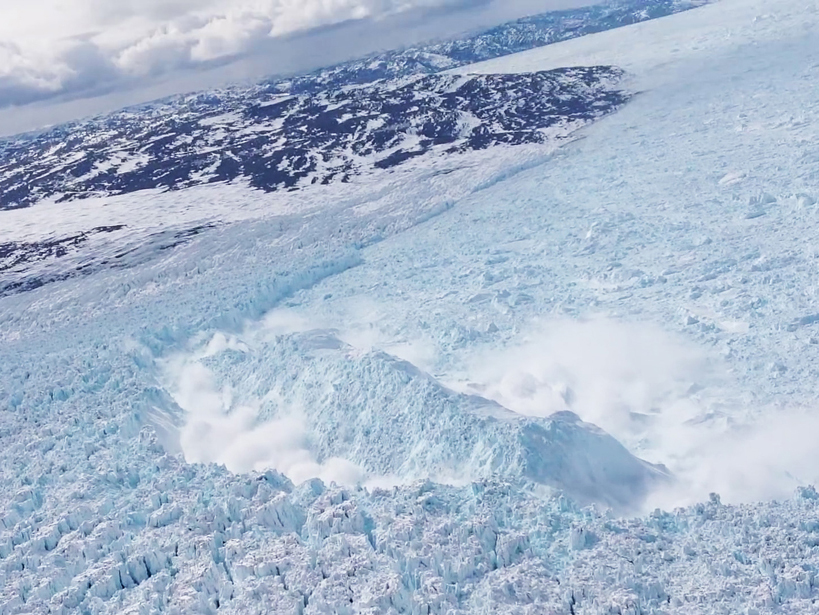The Midcontinent Rift has characteristics of a large igneous province, causing geologists to rethink some long-standing assumptions about how this giant feature formed.
imagery
Novel Technique Finds New Features Under United States
A new high-fidelity tomography harnesses USArray data to expose a wealth of noteworthy crustal and upper mantle structures, including previously unknown anomalies beneath the Appalachians.
Seismic Clues Reveal the Mechanisms Behind Iceberg Calving
Scientists combine models and video footage of iceberg calving to analyze the potential of seismology to unravel physical processes behind the breakup of ice sheets.
Experiment Captures First Image of Thunder
Scientists can now visually capture the sound waves created by thunder, a technique that could lead to an increased understanding of how lightning forms and transmits energy.
The Art and Science of Hubble's Images
How do Hubble images get their vivid colors and subtle shading?
Seismic Wave Modeling Goes Local
A new technique brings accurate models of traveling seismic waves to a regional scale.
Reply [to "Comment on 'Color Schemes for Improved Data Graphics,' by A. Light and P. J. Bartlein"]
By calling attention to the perception of data graphics among color-impaired readers, we hoped to raise awareness of an even more prevalent phenomenon: the misuse of spectral, or “rainbow,” color schemes. David B. Stephenson is quite right regarding the incidence of different forms of color-vision impairment, which varies among racial and ethnic groups and is […]
Comment on "Color Schemes for Improved Data Graphics," by A. Light and P. J. Bartlein
As a color-blind climatologist, I very much appreciated the important color-awareness issues raised by A. Light and P. J. Bartlein in their recent Eos article titled “The End of the Rainbow? Color Schemes for Improved Data Graphics,” (85(40), 5 October 2004, p. 385). Meteorological and climate information is frequently communicated in the form of highly […]
The End of the Rainbow? Color Schemes for Improved Data Graphics
Here's a simple guide to creating engaging, easy-to-read graphics to accompany your research.





